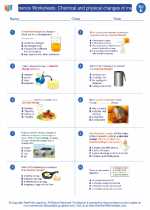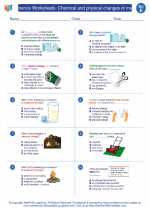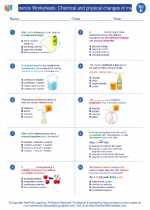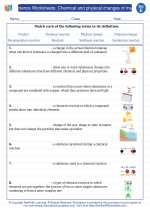Double Replacement Reactions
Double replacement reactions, also known as double displacement reactions or metathesis reactions, occur when the cations and anions of two different compounds switch places, forming two new compounds. These reactions typically occur in aqueous solutions and are characterized by the formation of a precipitate, gas, or a molecular compound, such as water.
General Form of Double Replacement Reactions
The general form of a double replacement reaction can be represented as:
AB + CD → AD + CB
Where A and B are cations, and C and D are anions.
Example of Double Replacement Reaction
An example of a double replacement reaction is the reaction between silver nitrate (AgNO3) and sodium chloride (NaCl) to form silver chloride (AgCl) and sodium nitrate (NaNO3):
AgNO3 + NaCl → AgCl + NaNO3
Factors Affecting Double Replacement Reactions
Several factors can affect the outcome of double replacement reactions, including:
- Solubility: The solubility of the products determines whether a precipitate will form. Some combinations of cations and anions form insoluble compounds, leading to the formation of a precipitate.
- Concentration: The concentration of the reactants can influence the rate and extent of the reaction.
- pH: The pH of the solution can affect the solubility of the compounds and the reaction rate.
Study Guide for Double Replacement Reactions
When studying double replacement reactions, it's important to understand the following key points:
- Identify the cations and anions present in the reactants and predict the possible products of the reaction.
- Understand the concept of solubility rules to predict whether a precipitate will form.
- Balance the chemical equation for the double replacement reaction, ensuring that the number of atoms of each element is conserved on both sides of the equation.
- Be able to recognize the different types of reactions that can occur in double replacement reactions, such as the formation of a precipitate, gas, or a molecular compound.
Practice solving double replacement reaction problems and familiarize yourself with common double replacement reactions to reinforce your understanding of this topic.
Remember that double replacement reactions play a crucial role in various chemical processes and are important to understand in fields such as chemistry, environmental science, and material science.
By mastering the concepts and principles of double replacement reactions, you will be better equipped to understand and analyze chemical reactions in various contexts.
[Double Replacement Reactions] Related Worksheets and Study Guides:
.◂Science Worksheets and Study Guides Fifth Grade. Science Worksheets: Chemical and physical changes of matter

 Worksheet/Answer key
Worksheet/Answer key
 Worksheet/Answer key
Worksheet/Answer key
 Worksheet/Answer key
Worksheet/Answer key
 Vocabulary/Answer key
Vocabulary/Answer key
